This battle has it all. Blitz moves, traitors, flanking, rousing speeches, dramatic scenes of gentlemen wounded in battle, cavalry in mad pursuit etc. It was my best battle I fought with the For King & Parliament rules and probably one of the very best solo battles I ever played! Although I would rather play these battles with miniatures it shows that all it needs (at least for me) is a good rule set and some imagination. Although the added stakes from campaign play help quite a bit.
The Royalist Army
Before the battle I made sure of a even horse/foot quota points-wise. As the war progresses more and more seasoned units emerge. Recent losses seem to have thinned the ranks of skilled horsemen, though. The random event was “Traitor” but there was no brigade general to replace by a colonel so I ruled that the gallant gentleman I rolled for Gatring’s brigade was the traitor. Given that the Parliamentarian army fields two gentlemen accompanying the troops, it is safe to assume, the traitor found his way to the Parliamentarian camp the night before the battle.
Command…5
General Irving C-in-C
Brigade of Horse…31
Gallant Colonel Fielding
“Swedish”-style horse – raw
“Swedish”-style horse – seasoned
“Swedish”-style horse – raw, poorly mounted
“Swedish”-style horse – seasoned
“Swedish”-style horse – raw
“Swedish”-style horse – raw
“Swedish”-style horse – raw, untried, poorly mounted
Brigade of Horse…20
“Swedish”-style horse – raw
“Swedish”-style horse – raw, untried
“Swedish”-style horse – raw, untried
“Swedish”-style horse – seasoned
“Swedish”-style horse – seasoned
Brigade of Foot…57
Colonel Gatring
Pike and shot battalia – seasoned, large
Pike heavy battalia -raw
Pike heavy battalia – seasoned
Pike and shot battalia – raw
Dragoons – raw
Pike heavy battalia – raw, large
Pike and shot battalia – seasoned
113 points / 20 victory medals
The Parliamentarian Army
On the morning before the battle general Islington, who beat the Royalists handily at Thorne half a year ago, gave a rousing speech to his men. He even presented Sir Fleming who fled the Royalist camp under threat of his life to bring information and his support to the cause.
Command…9
General Islington C-in-C
Field artillery – seasoned
Brigade of Horse…19
“Swedish”-style horse – raw, untried, attached shot
“Swedish”-style horse – raw
“Swedish”-style horse – seasoned
“Dutch”-style horse – raw
Brigade of Horse…30
“Swedish”-style horse – raw, untried, poorly mounted
“Swedish”-style horse – veteran, well mounted, attached shot, gentleman
“Swedish”-style horse – seasoned
“Dutch”-style horse – raw, untried, poorly mounted
“Dutch”-style horse – raw
Brigade of Foot…31
Pike and shot battalia – raw
Pike and shot battalia – raw, untried
Pike and shot battalia – raw
Pike and shot battalia – raw
Pike heavy battalia – raw, untried, large
Forlorn hope – raw
Brigade of Foot…16
Pike and shot battalia – raw
Pike and shot battalia – seasoned, gallant gentleman
Pike and shot battalia – seasoned
114 points / 23 victory medals (+1 from rousing speech)
The army has begun to field its horse in “Swedish”-style since April. Being a well liked and able general he even got the command of Baker’s Horse (veteran). The foot on the other hand is relatively fresh.
The Battle of Allerton Moor
Iconography
Parliamentarians in red, Royalists in blue
Unit with many vertical lines = horse
Unit with a horizontal line and vertical lines sticking out = pike and shot
Unit with several horizontal lines = Forlorn hope and Dragoons
Unit with three “+”-like signs = artillery
Red dice = hits
Green dice = ammo
Blue dice = dash
Red die on the left = raw
Red die in the middle = seasoned
Red die on the right = veteran
Hollow square = attached shot
Filled square = large
Question mark = untried
Hat = gentleman
Horse with + / – = well / poorly mounted

The dispositions after set-up. The Parliamentarians have one inexperienced unit of horse in reserve on their right flank, where their strong cavalry wing is situated. The fields in the center are surrounded by hedges and provide an excellent strong-point. The river is rather shallow passable anywhere but still considered rough terrain.
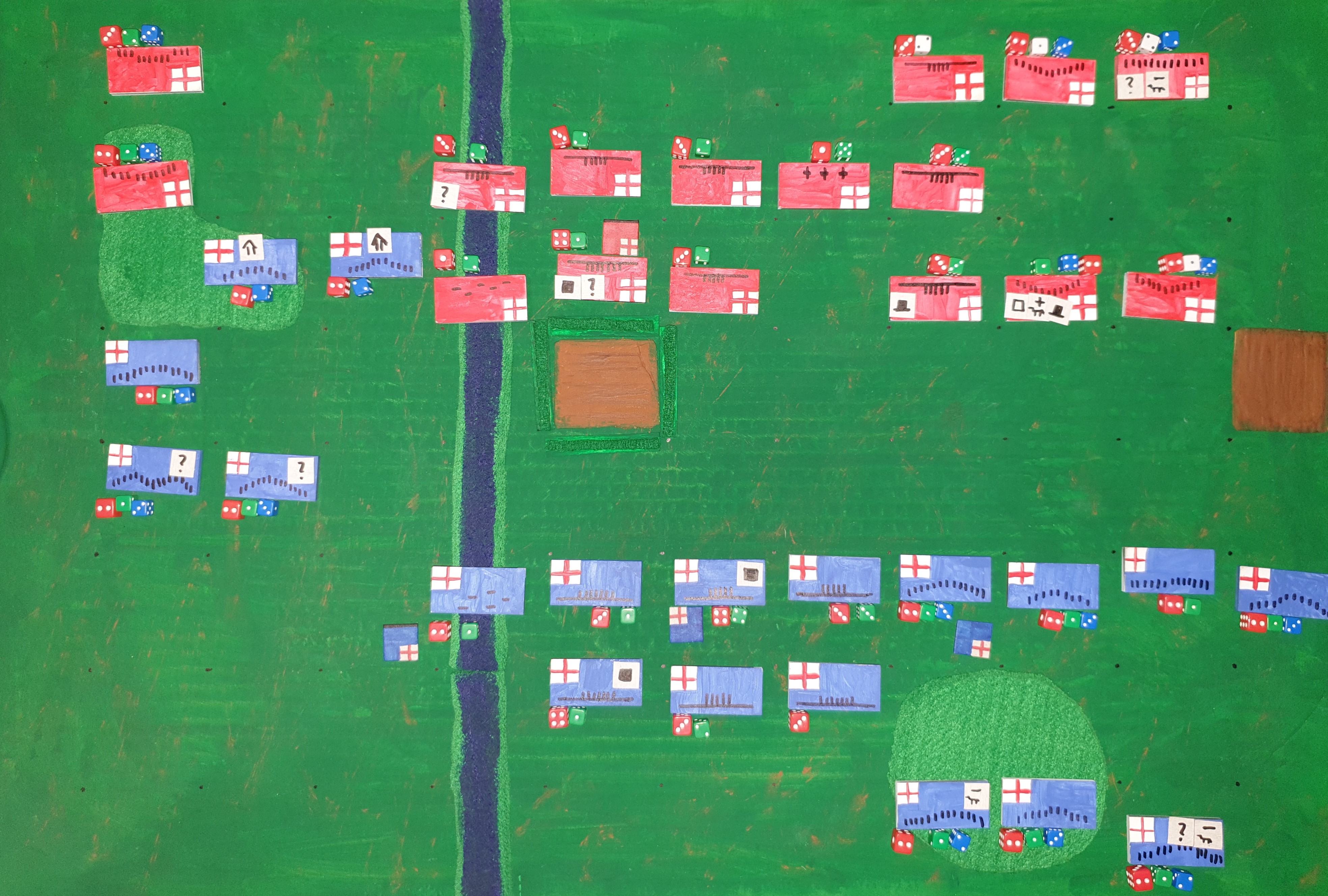
In a surprise rush General Irving sends his horse on the left flank up the hill. The Royalist horse completed crushes their opposition and rip a large hole in the Parliamentarian battle line from the get-go.
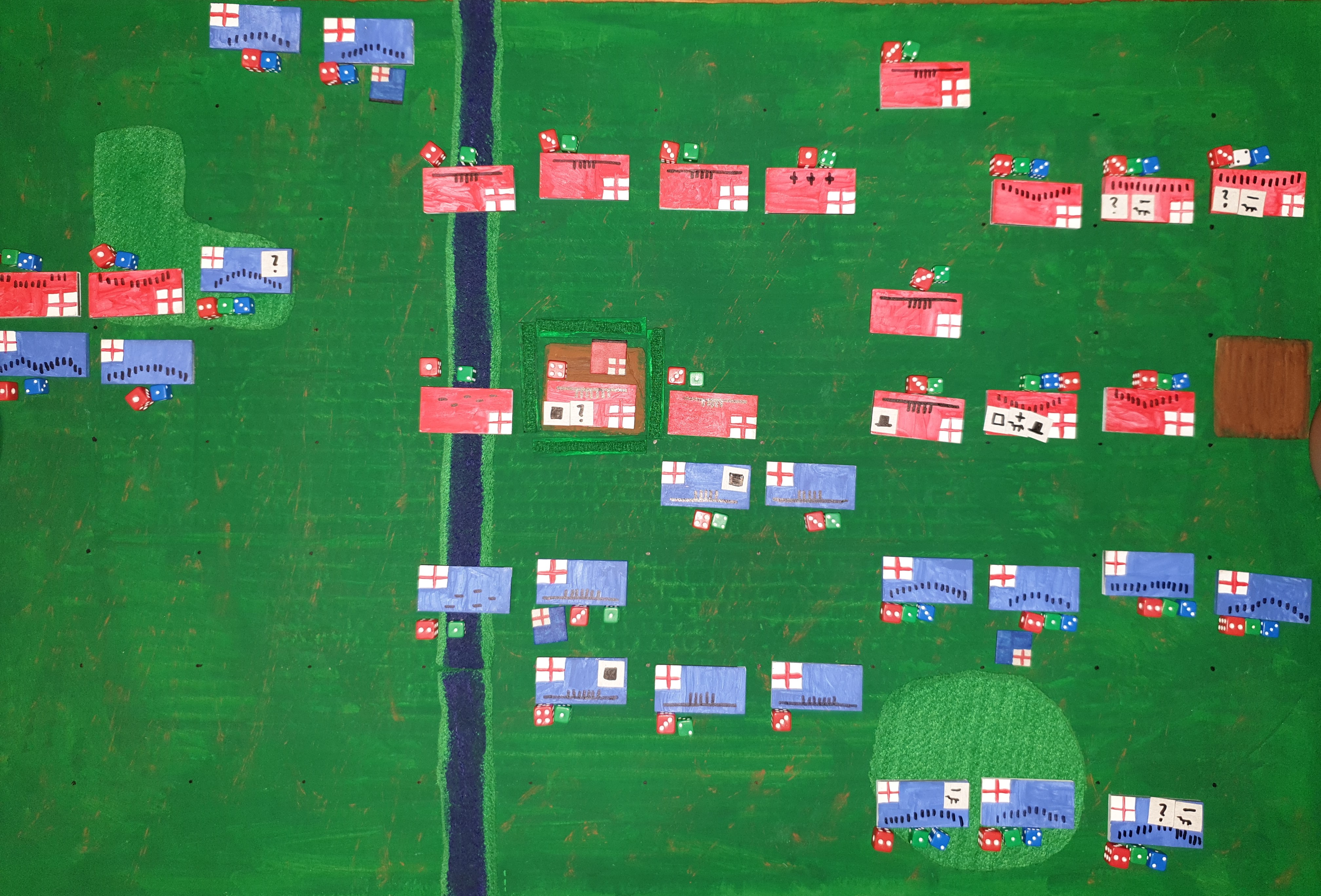
The men opposing the king are saved for now by successful Royalist horse pursuing without any sign of stopping. The second wave attacks meanwhile but cannot match the stunning success of the first wave. On the other side of the field the cavalry is locked in a standoff while the smoke of the first volleys of the foot begin to fog up the battlefield.
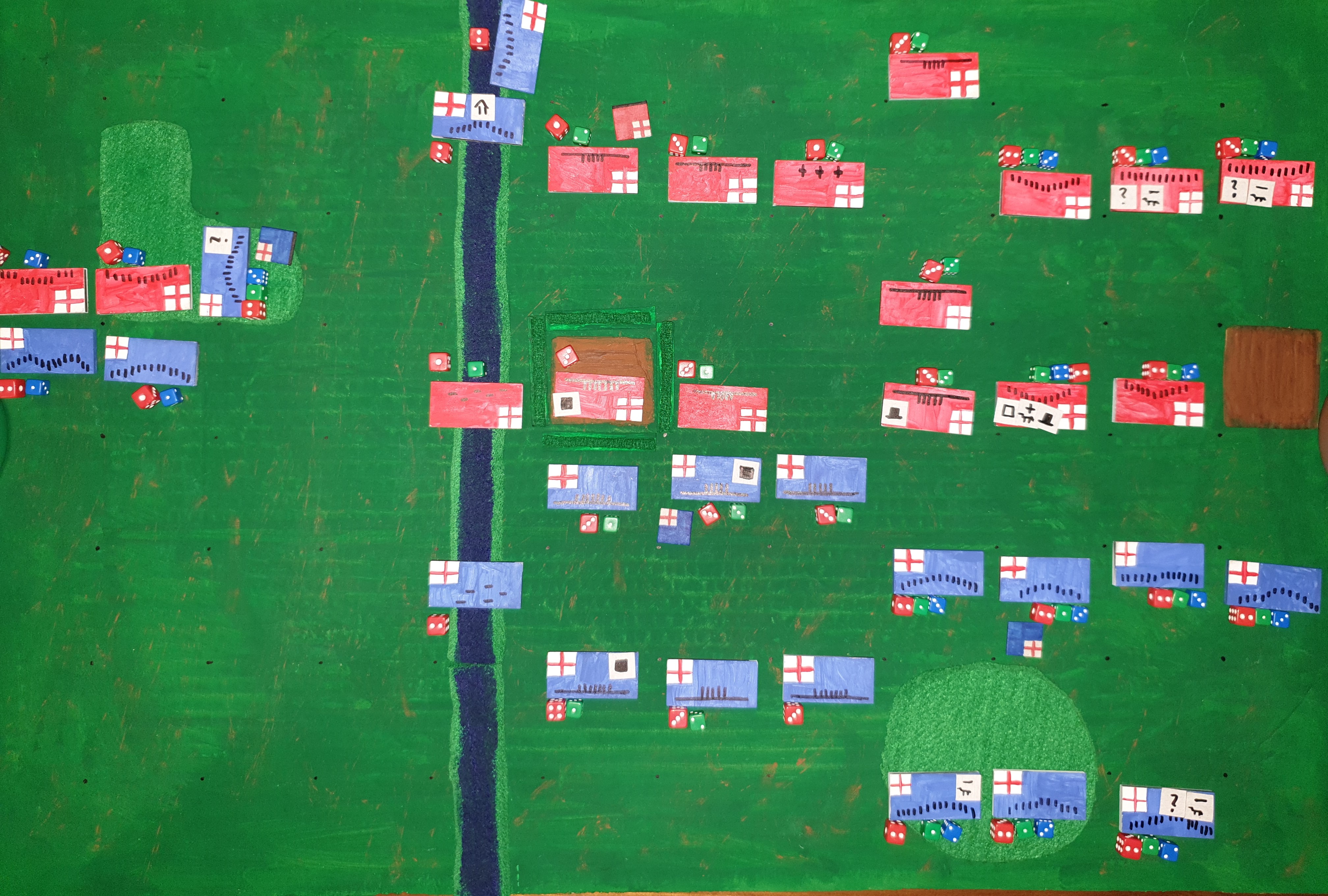
General Irving personally rode to stop his troops from pursuing and pillaging. He made it clear that such fine, distinguished gentlemen such as themselves where had a duty to fulfill before the spoils of war could be divided. Both units promptly turned their horses and fell into the Parliamentarian flank, riding another unit into the ground.
Elsewhere the fight or standoff continued without much gain.
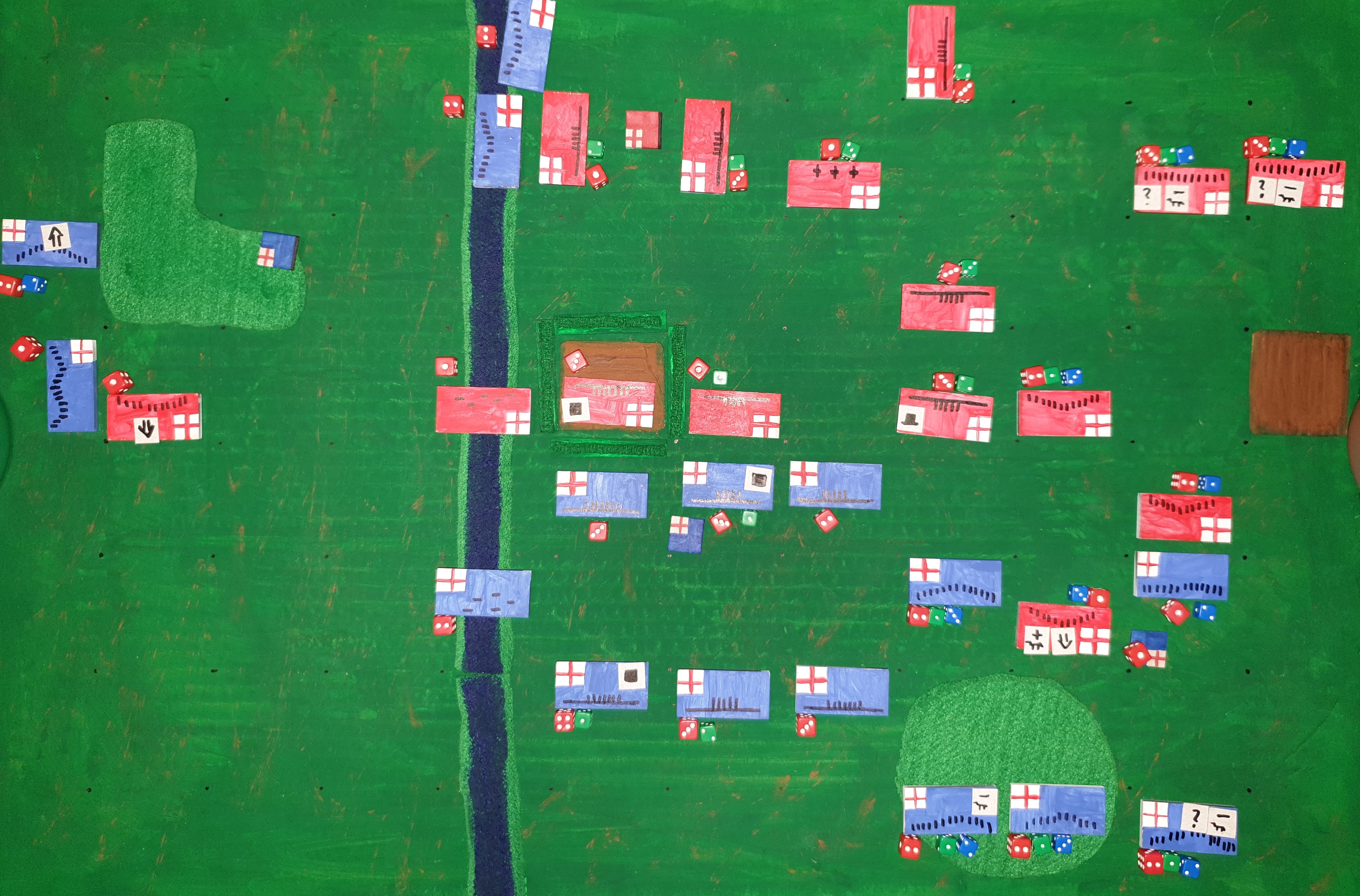
With his entire right flank collapsing general Islington ordered Baker’s veteran horse regiment to attack and regain the initiative. With some support from other units Baker attacked and handily defeated a Royalist horse regiment, wounding colonel Gatring in the process. Islington meanwhile reordered his troops to defend the center against two directions of attack and gave up on his isolated units on his right.

The Royalists are now in firm control of their left flank. On their right they dealt with Baker’s horse but more Parliamentarian horse streamed in causing high casualties on both sides.
In the center colonel Fielding is wounded by a musket ball but keeps standing.

By midday the fighting ebbed as both sides were tired from hours of intense fighting.
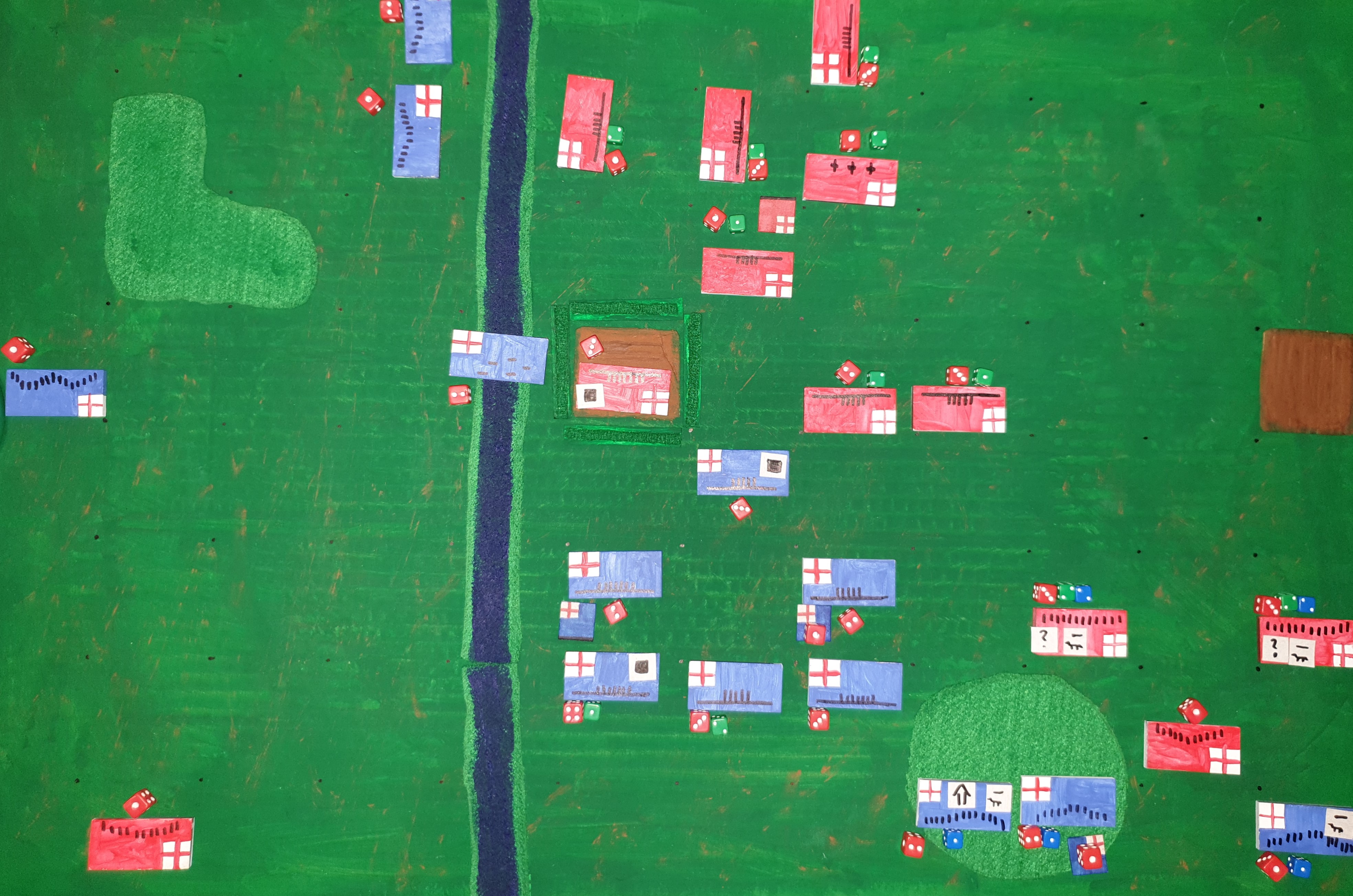
Generals keep shifting troops and rallying wavering men. The second wave of Parliamentarian horse moves on the right.
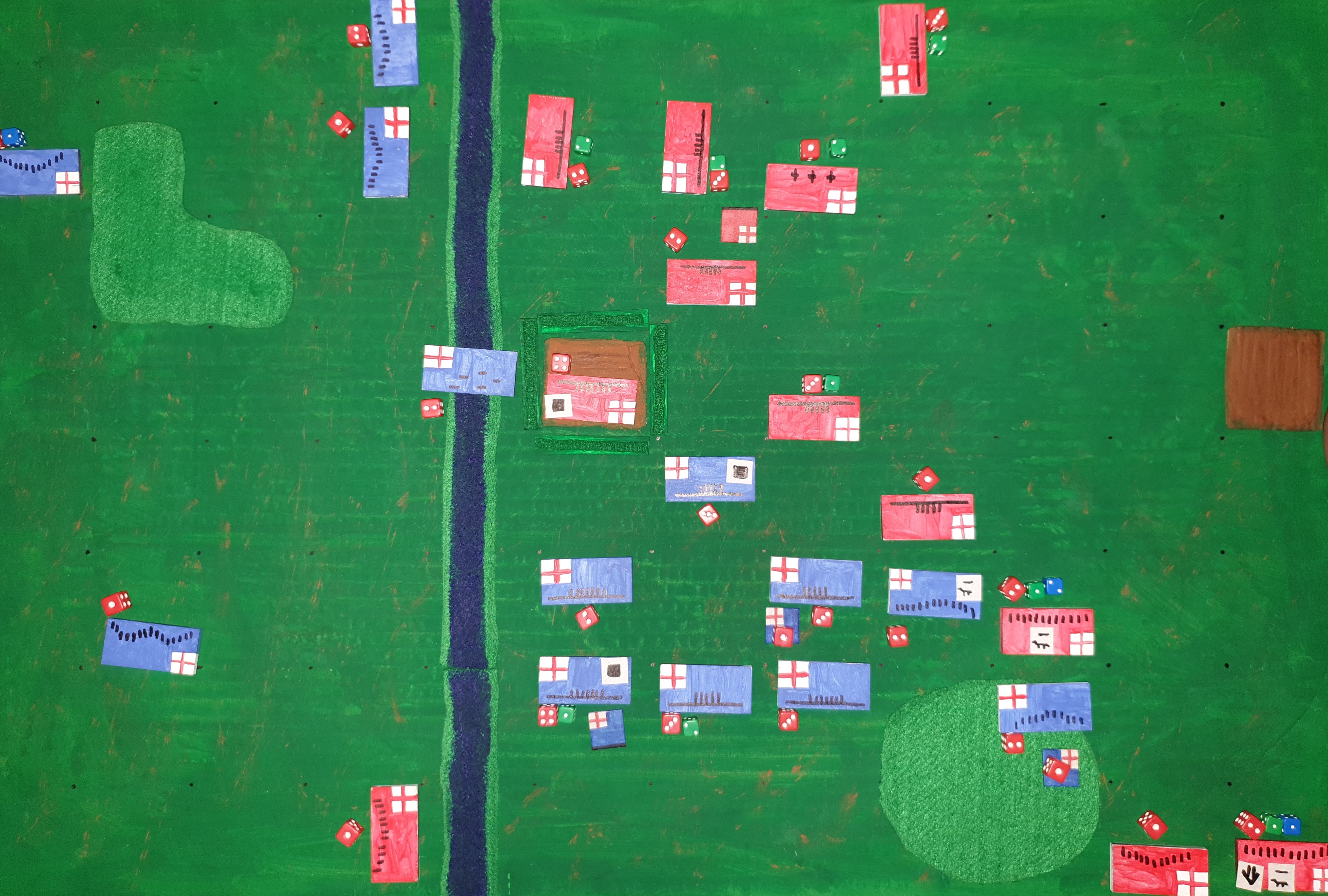
The second wave’s attack is met with success and both sides have 8 victory medals left. On the other side of the field a spend and beaten horse regiment closes in on the Royalist flank in a rather unexpected move.
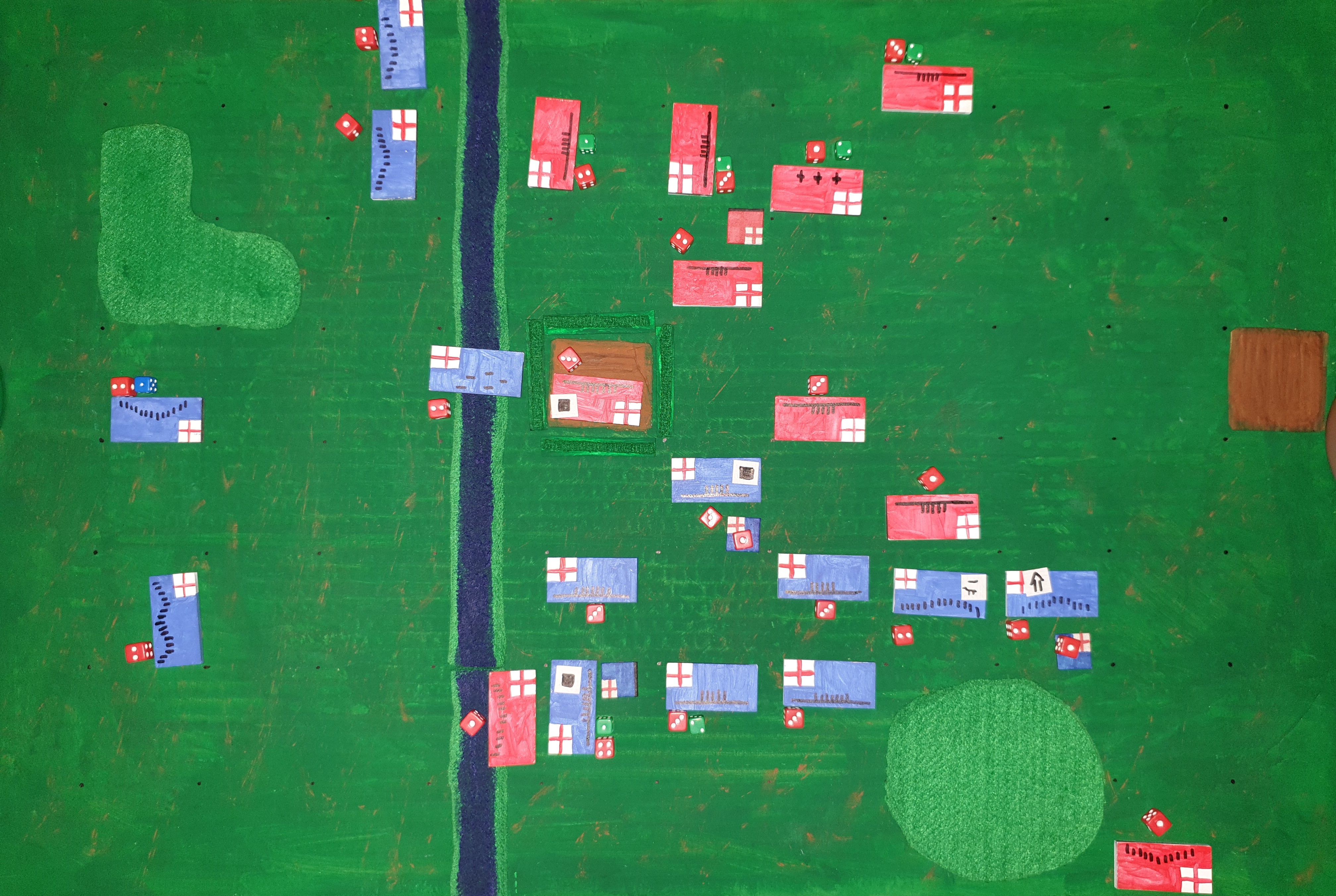
The flank attack, although poorly executed nearly ends in a disaster as General Irving falls off his horse in the tumult. Now, all three Royalist commanders have been wounded! After some minutes of rest Irving shrugs his dizziness off. If Colonels Gatring and Fielding can fight on wounded who would he be to retire to the rear.
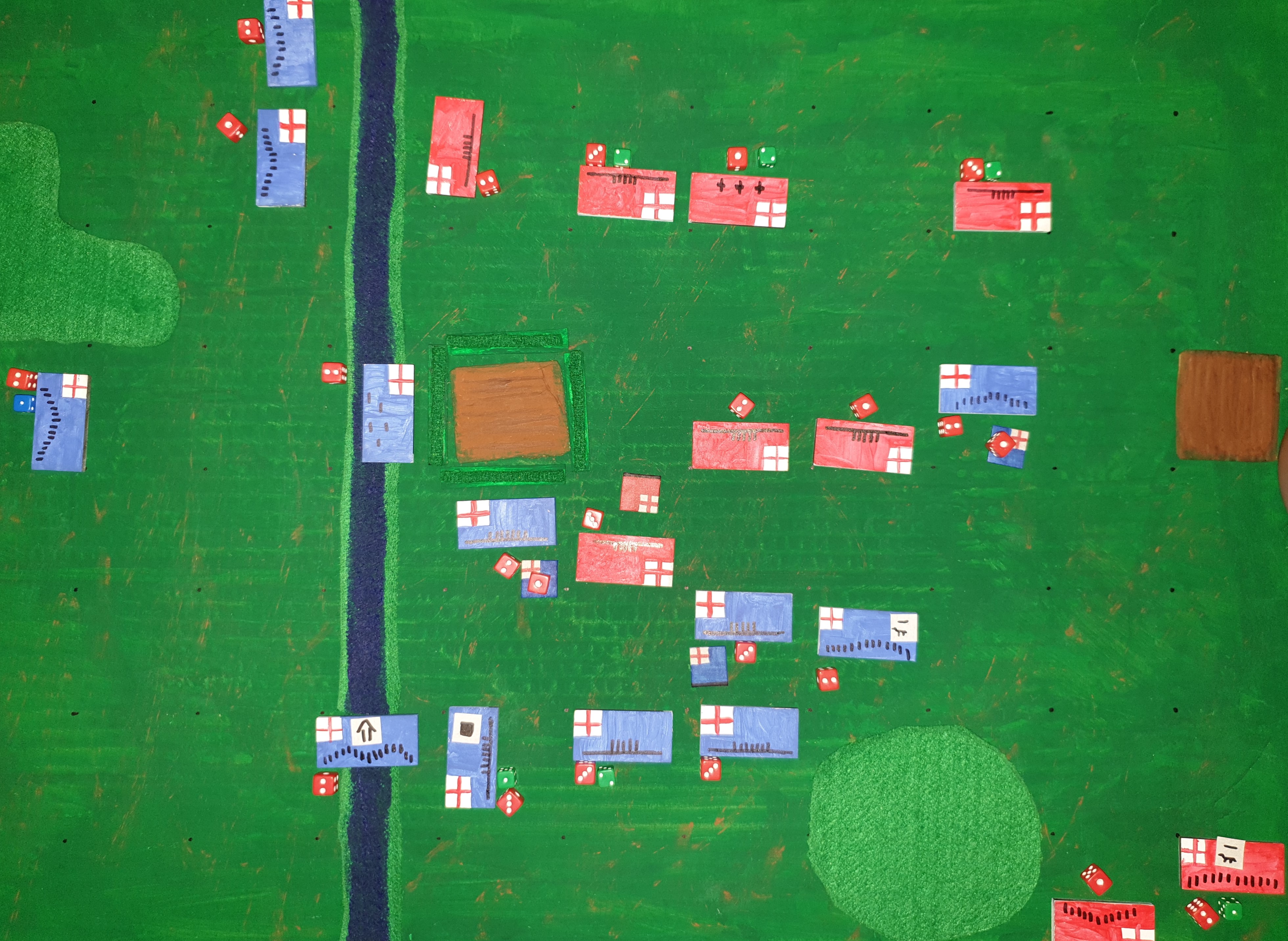
The end of the battle. Royalists cleared the hedges in the center of enemy troops and break the Parliamentarians will to fight. With only 4 victory medals left a narrow win for the Royalists but at long last the first win in a major battle since the civil war started.
The Aftermath
As I changed the amount of SP (strategy points) earned per battle I thought it is only fair to grant the Parliamentarians the points from earlier battles. So for this turn the Royalists receive 5 SP for a narrow win and their adversaries receive 3 SP for a loss and another 3 SP from earlier wins for a total of 6 SP.

After the battle of Draycott in February the Royalists were in no position to attack the south and shifted to the northern part of England where the still hold popular support. Allerton Moor was a win the battered men of the King direly needed for their morale. It also brought West Yorkshire and Derbyshire to the fold. South Yorkshire was quickly retaken by the Parliamentarians, however.
After some month support for the Parliamentarians in Wales was eroded enough that Dyfed declared their neutrality.
Parliamentarians continued the siege of Oxford but the garrison still holds strong after many month. Parliamentarian support still grows south of the “fortress line” which alleviates their loss of land in the north and in Wales.
